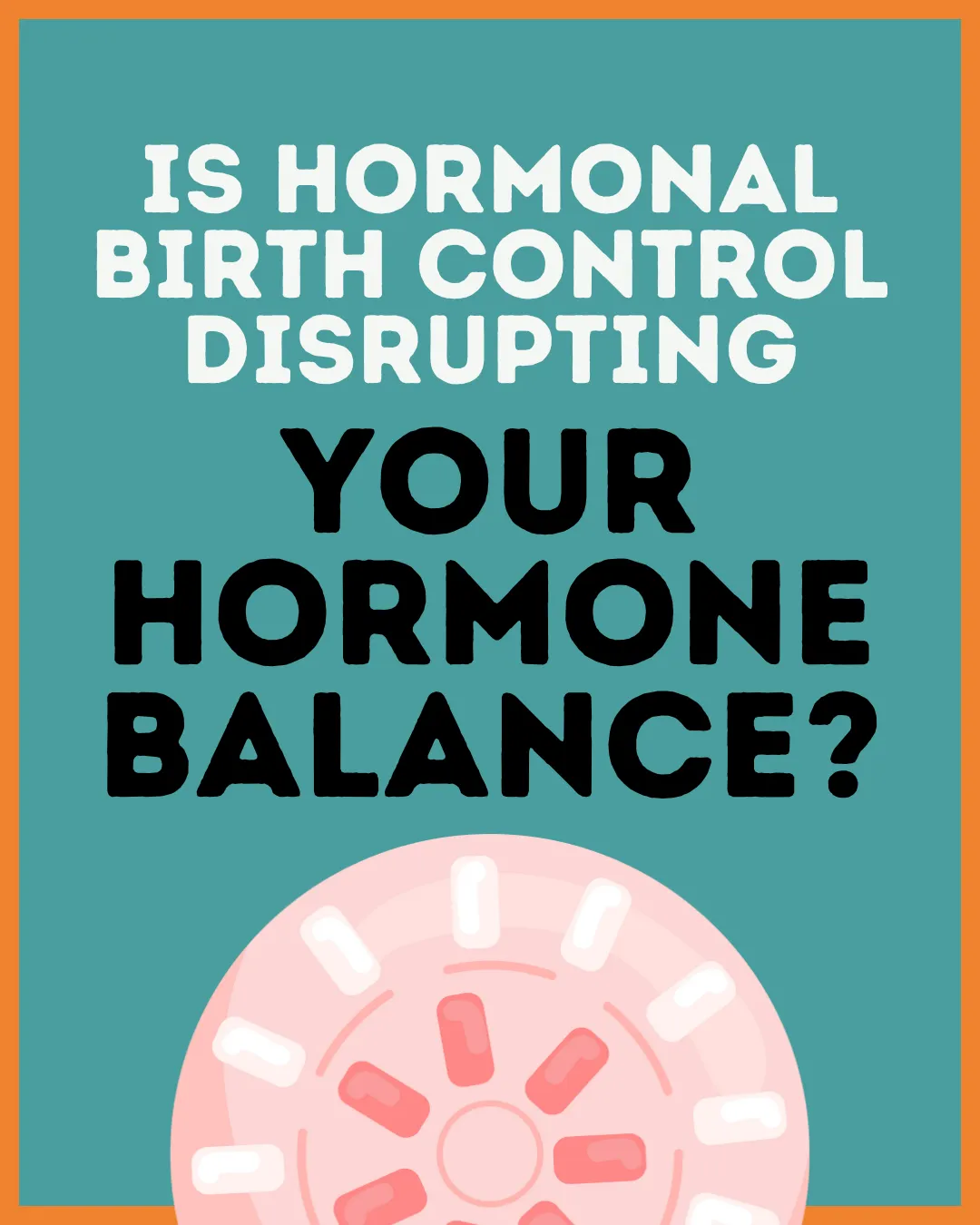Stay informed with the latest insights and resources
We share valuable tips, success stories, and practical advice to support you on your wellness journey.

Unpacking the Effects of Hormonal Contraceptives on Women's Health
Hormonal birth control has transformed reproductive health, offering women more autonomy and choice than ever before. But while it’s widely used and often helpful for preventing pregnancy and managing menstrual symptoms, its broader effects on hormone balance are often overlooked. This is where a more personalized, root-cause lens becomes invaluable.
🚦What Happens When You Take Hormonal Birth Control?
Most hormonal birth control options contain synthetic versions of estrogen and/or progestin. These hormones work by:
Suppressing ovulation
Thickening cervical mucus to prevent sperm movement
Thinning the uterine lining to discourage implantation
But in doing so, they also suppress your body's natural hormone production. It's like putting your ovaries on standby while synthetic hormones take over.
🔄How Hormonal Birth Control Disrupts Balance
Hormonal birth control can be helpful—but it's not without side effects. For many women, these include:
1. Suppressed Natural Hormone Production
The pill shuts down communication between your brain and ovaries, stopping normal estrogen and progesterone production.
2. Disrupted Menstrual Cycles
That monthly bleed on the pill? It’s not a real period. It’s a withdrawal bleed triggered by stopping the synthetic hormones for a few days.
3. Mood Changes
Anxiety, irritability, and low mood can arise or worsen while on the pill due to how synthetic hormones influence neurotransmitters like serotonin and dopamine.
4. Nutrient Depletion
Hormonal contraceptives can lower your body’s stores of B vitamins, zinc, magnesium, and selenium - key nutrients needed for hormone production and detoxification.
5. Strain on Thyroid and Adrenal Glands
Chronic use can stress your entire endocrine system, especially in women already dealing with stress, fatigue, or thyroid issues.
🌿Coming Off the Pill? Here's How to Support Hormone Recovery
Discontinuing birth control can feel like a hormonal rollercoaster—acne, fatigue, mood swings, and irregular cycles are common. Here's how to smooth the transition:
✅ 1. Rebuild Nutrient Reserves
Start with a high-quality B-complex, magnesium glycinate, and zinc to replenish depleted stores.
✅ 2. Nourish With Whole Foods
Eat a colorful, nutrient-rich diet: leafy greens, cruciferous vegetables, healthy fats (like avocado and olive oil), and clean proteins (like eggs and salmon).
✅ 3. Love Your Liver
Your liver clears excess hormones. Support it with:
Beets
Artichokes
Dandelion root tea
Lemon water
✅ 4. Balance Blood Sugar
Unstable blood sugar can worsen hormone symptoms. Prioritize meals with protein + fiber + fat to keep your insulin in check.
✅ 5. Manage Stress Gently
Chronic stress disrupts your hormone and adrenal health. Try:
Forest walks
Yoga or breathwork
Journaling or mindful breaks
✅ 6. Track Your Cycle
Apps or journals help you reconnect with your natural rhythm and understand ovulation, PMS, and cycle length.
🔬Testing Options to Personalize Your Plan
Functional medicine takes the guesswork out. Key tests may include:
DUTCH Test: Advanced hormone + metabolite mapping
Salivary Cortisol: Adrenal and stress response analysis
Comprehensive Stool Test: Gut flora, inflammation, and digestion insights
Micronutrient Panel: Uncovers key deficiencies affecting hormones and mood
⚠️What Is Post-Birth Control Syndrome (PBCS)?
Some women experience Post-Birth Control Syndrome—a constellation of symptoms like:
Acne
Digestive issues
Fatigue
Mood swings
Irregular or absent periods
This often ties back to gut health and hormone detox pathways. Birth control can:
Disrupt your gut microbiome
Increase intestinal permeability ("leaky gut")
Slow down hormone metabolism
Support recovery with:
Probiotic-rich foods (sauerkraut, yogurt, kefir)
L-glutamine and zinc carnosine for gut repair
Daily movement and hydration to promote detox
🌟Ready to Restore Balance? We Can Help.
Whether you’re:
Transitioning off hormonal birth control
Considering your options
Or struggling with symptoms that no one seems to understand—
You don’t have to do it alone.
📞 Book a consultation today to get personalized guidance, advanced testing, and a hormone recovery plan that supports your long-term health.
References
American College of Obstetricians and Gynecologists. (2020). Hormonal Contraception
Mu E, Kulkarni J. Hormonal contraception and mood disorders. Aust Prescr. 2022;45(3):75-79.
Bitzer PEJ. Effects of hormonal contraception on mood and sexuality. Best Pract Res Clin Obstet Gynaecol. 2024;97:102560.
Burrows LJ, Basha M. Adverse effects of hormonal contraceptives. Open Access J Contracept. 2011;2:115–123.
Briden, L. Period Repair Manual. 2015.

